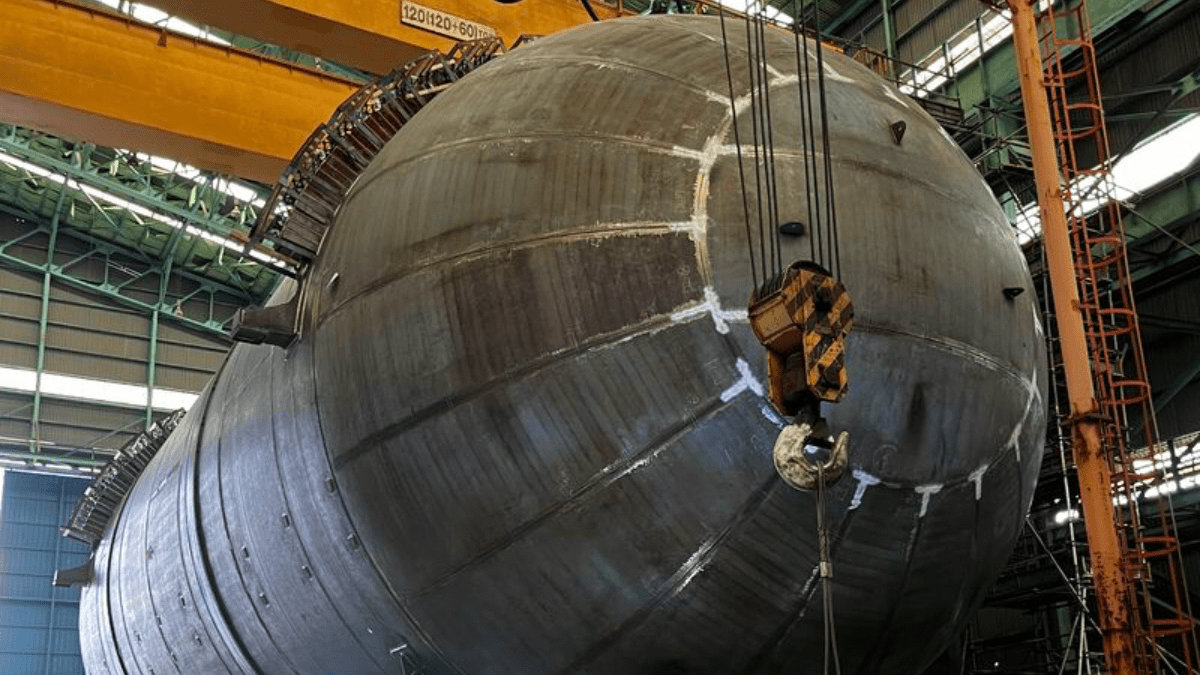Specialised steel has been applied for LNG fuel tanks, but could see broader use at LNG terminals, hydrogen and carbon capture, utilisation and storage projects
Cryogenic high-manganese steel fuel tanks are being applied for the first time in the construction of LNG dual-fueled very large crude carriers (VLCCs), under construction at Daewoo Shipbuilding & Marine Engineering (DSME) in South Korea.
Developed specifically for LNG storage and transport, Korean steel maker Posco started R&D on the new material in 2010, completing its effort in 2013.
The specialised steel contains 22.5% to 25.5% of manganese and can withstand temperatures as low as -196 °C. To remain in a liquid state, LNG requires cryogenic temperatures of -162 °C.
Posco says LNG tanks made of the material are “superior to the currently existing nickel or aluminum alloy-made tanks in terms of yield strength, the minimum temperature it can hold, toughness and price.”
High-manganese steel was first applied to the LNG fuel tanks on the LNG dual-fuel bulk carrier Green Iris, built for domestic trade in 2018.
IMO’s Maritime Safety Committee approved interim guidelines for the use of high-manganese steel in LNG cargo and fuel tanks in 2019. Up to that point, IMO only allowed four kinds of materials for LNG tanks: nickel alloy steel; stainless steel; 9% nickel steel; and aluminum alloy.
“This unique material saves weight, which allows us to increase fuel carrying capacity and increase the trading range of the ships”
Now, a series of three LNG dual-fuel VLCCs being built by DSME for US-based International Seaways will incorporate high-manganese steel fuel tanks. Set for delivery in 2023, the three VLCCs are fixed on seven-year charters with Shell.
Commenting on the high-manganese steel of the LNG storage tanks in a social media post, International Seaways said: “This unique material saves weight, which allows us to increase fuel carrying capacity and increase the trading range of the ships.The tanks, once insulated and installed onboard, will measure 13.5 m in diameter and 36m long.Construction of these tanks is being closely overseen by our onsite construction supervision team.”
Noting the “significant environmental benefit” of the VLCCs, International Seaways chief executive and president Lois K. Zabrocky, said the US shipowner expected “these tankers to be well suited to adhere to future environmental regulation throughout their life, as they meet both today’s IMO Energy Efficiency Design Index and also exceed the 2025 Phase III EEDI targets by about 8%.”
Use in LNG terminals
The broader application of high-manganese steel in the LNG and cryogenic storage sector appears likely after Posco reported in May it had received approval from ExxonMobil for use of the material as LNG storage and transportation material. The certification process lays the groundwork for the use of the material in LNG terminals being built for ExxonMobil.
The two firms agreed to technological co-operation in potential applications of high-manganese steel in other applications, such as hydrogen projects and carbon capture, utilisation and storage.
High-manganese steel has already been applied to Posco’s Gwangyang LNG storage tank No. 5 in South Korea and the fuel tanks of about 20 LNG-powered ships.






